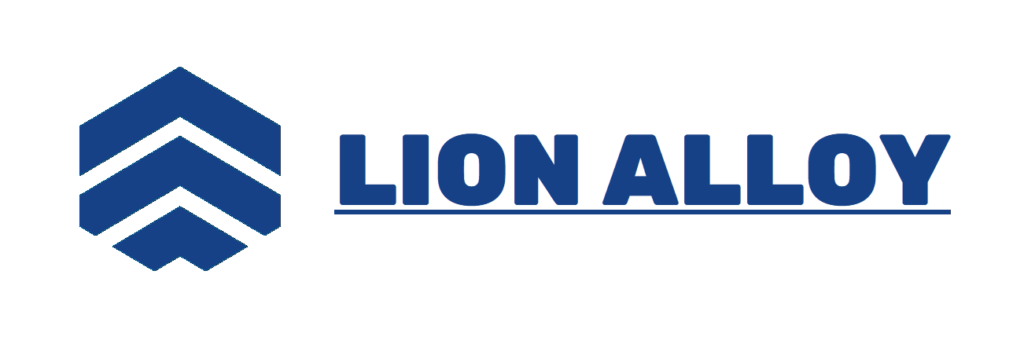Udimet® Alloy R41 (UNS N07041) Introduzione al prodotto
Udimet® Alloy R41, designato come UNS N07041, è una SuperAlloy a base di nichel ad alta temperatura nota per la sua eccezionale resistenza e resistenza alla corrosione in ambienti estremi. Questo articolo fornisce un'introduzione completa a Udimet® Letre R41, coprendo la sua composizione chimica, le proprietà meccaniche, le prestazioni a temperature diverse, applicazioni industriali, forme e dimensioni, standard di produzione, capacità di saldatura e lavorazione, vantaggi e svantaggi e un confronto con legili simili.
Composizione chimica
Udimet® Lay R41 è principalmente composto da nichel con significative aggiunte di cobalto, cromo, tungsteno e molibdeno per migliorare le sue proprietà meccaniche e termiche:
| Elemento | Composizione (%) |
|---|---|
| Nichel (Ni) | 50.0 - 60.0 |
| Cobalto (Co) | 14.0 – 17.0 |
| Cromo (Cr) | 15.0 - 18.0 |
| Tungsteno (W) | 3.0 – 5.0 |
| Molibdeno (Mo) | 2.5 - 4.0 |
| Ferro (Fe) | 3.0 – 5.0 |
| Titanio (Ti) | 1.5 - 2,5 |
| Alluminio (Al) | 0.1 - 0,5 |
| Boro (b) | 0.005 - 0,05 |
| Carbonio (C) | 00,05 massimo |
Proprietà meccaniche
Udimet® Alloy R41 presenta eccellenti proprietà meccaniche adatte per applicazioni ad alta temperatura:
| Proprietà | Valore |
|---|---|
| Resistenza alla trazione, ksi (MPa) | 150 - 180 (1034 - 1241) |
| Limite di snervamento (compensazione dello 0,2%), ksi (MPa) | 110 - 140 (758 - 965) |
| Allungamento (% in 2 pollici) | 20 - 25 |
| Durezza, Rockwell C (HRC) | 35 - 40 |
Caratteristiche prestazionali
Udimet® Alloy R41 offre diversi vantaggi per le prestazioni:
- Resistenza ad alta temperatura: Mantiene eccellenti proprietà meccaniche a temperature fino a 1000 ° C (1832 ° F), adatte per l'uso nelle turbine a gas e altre applicazioni ad alta temperatura.
- Resistenza all'ossidazione: Fornisce una resistenza superiore all'ossidazione e alla corrosione in ambienti ad alta temperatura e aggressiva.
- Resistenza al creep: Presenta un'elevata resistenza al creep, rendendolo ideale per i componenti a stress costante a temperature elevate.
Applicazioni industriali
Udimet® Lay R41 è utilizzato in vari settori impegnativi in cui sono richieste alte prestazioni in condizioni estreme:
| Settore industriale | Applicazioni |
|---|---|
| Aerospaziale | Componenti della turbina a gas tra cui pale, dischi e sigilli. |
| Produzione di energia | Lame di turbina, camere di combustione e scambiatori di calore. |
| Elaborazione chimica | Vai da reattore, condutture e valvole per la manipolazione di sostanze chimiche corrosive ad alte temperature. |
Forme e dimensioni
Udimet® Alloy R41 è disponibile in vari moduli e dimensioni per soddisfare le esigenze specifiche dell'applicazione:
- Forme: Lamiere, lastre, barre, pezzi fucinati e fili.
- Taglie: Spessori da 0,5 mm a 100 mm per le piastre e diametri da 1 mm a 300 mm per le barre tonde.
Standard di produzione
Udimet® Alloy R41 è conforme agli standard di produzione internazionali che garantiscono qualità e affidabilità:
| Forma del prodotto | Forme disponibili | Taglie disponibili | Standard di produzione |
|---|---|---|---|
| Lastre/Fogli | Fogli, Piatti | Spessore: 0,5 mm – 100 mm | ASTM B637, AMS 5764 |
| Barre/Aste | Barre tonde, Barre quadrate | Diametro: 1 mm – 300 mm | ASTM B637, AMS 5764 |
| Forgiati | Blocchi, Dischi, Anelli | Dimensioni: personalizzato | ASTM B637, AMS 5764 |
Saldatura e lavorazione
Udimet® Alloy R41 offre una buona saldabilità e caratteristiche di elaborazione:
- Saldatura: Può essere saldato usando metodi come TIG, MIG e saldatura di resistenza. Il trattamento termico di preriscaldamento e post-salvataggio può essere necessario per mantenere le proprietà.
- Lavorabilità: Generalmente lavorata in condizioni di soluzione annealizzate usando strumenti di carburo e fluidi di taglio appropriati.
Vantaggi e svantaggi
| Aspetto | Dettagli |
|---|---|
| Vantaggi | Eccezionale resistenza e resistenza all'ossidazione ad alta temperatura, buona resistenza al creep e ampia disponibilità in varie forme e dimensioni. |
| Svantaggi | Costi più elevati rispetto alle leghe di nichel standard richiedono elaborazione e gestione specializzate a causa dei suoi elementi elevati e legati. |
Confronto con leghe simili
Udimet® Alloy R41 (UNS N07041) viene spesso confrontato con altre SuperAlloys a base di nichel ad alta temperatura come Udimet® Legato 718 e Udimet® Alloy 720. Ecco un breve confronto:
| Tipo/proprietà della lega | Lega UDIMET® R41 | Udimet® Alley 718 | UDIMET® lega 720 |
|---|---|---|---|
| Composizione chimica | Nickel alto, cobalto, cromo, tungsteno, molibdeno per resistenza ad alta temperatura. | Nickel elevato, cromo e niobio con aggiunte più piccole di alluminio e titanio. | Nickel alto, cobalto, cromo, tungsteno, molibdeno per resistenza ad alta temperatura. |
| Proprietà meccaniche | Maggiore resistenza alla trazione e snervamento, resistenza al creep superiore a temperature elevate. | Restensione di trazione e snervamento più bassa rispetto alla lega Udimet® R41, buona tenacità e resistenza alla fatica. | Maggiore resistenza alla trazione e snervamento rispetto a Udimet® Legato 718, eccellente resistenza all'ossidazione. |
| Applicazioni | Turbine a gas, componenti aerospaziali che richiedono resistenza ad alta temperatura e resistenza all'ossidazione. | Componenti aerospaziali, bulloni ad alta temperatura e dispositivi di fissaggio. | Turbine a gas, componenti aerospaziali che richiedono resistenza ad alta temperatura e resistenza all'ossidazione. |
Questo articolo dettagliato introduce la lega Udimet® R41 (UNS N07041), evidenziando la sua composizione chimica, le proprietà meccaniche, le caratteristiche delle prestazioni, le applicazioni del settore, le forme e le dimensioni disponibili, gli standard di produzione, le capacità di saldatura e di elaborazione, nonché vantaggi, svantaggi e un confronto con lega simili. Ingegneri e professionisti che cercano una SuperAlloy ad alta temperatura e ad alta temperatura per applicazioni critiche in aerospaziale, generazione di energia e lavorazione chimica troveranno Udimet® lega R41 ben adattato per l'uso in condizioni estreme.


